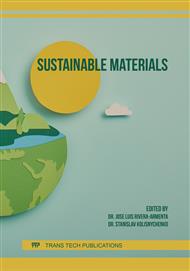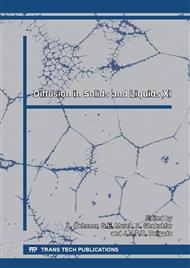p.1
p.6
p.12
p.17
p.24
p.30
p.36
p.42
p.48
Water Sorption of Vegetable Fiber Reinforced Polymer Composites
Abstract:
Despite the ever-growing worldwide interest in the use of lignocellulosic fibers as reinforcement in either thermoset or thermoplastic matrices, the use of these fibers to replace synthetic ones, is limited. The reasons for these limitations are associated with the vegetable fiber’s heterogeneity, lower compatibility to most polymers, inferior durability, flammability, poorer mechanical properties and higher moisture absorption when compared with synthetic fibers. Nevertheless, despite these drawbacks, vegetable fiber reinforced polymer composites are lighter in weight, more sustainable and can be used for non-structural products. Strategies to minimize these drawbacks include fiber and or matrix modification, the use of compatibilizers, fiber drying and the concomitant use of vegetable and synthetic fibers, for the production of hybrid composites, the latter being an unquestionable way to increment overall mechanical and thermal properties of these hybrid systems. Here we present data on the water sorption of polymer composites having thermoset and thermoplastic matrices as a function of vegetable fiber identity, content and hybridization with glass fibers. Our data indicates that, regardless if the matrix is a thermoset of a thermoplastic, water absorption tends to be relatively independent of vegetable fiber identity and to be significantly dependent of its content. Fiber drying prior to composite manufacturing and hybridization with glass fibers leads to lower overall water absorption and higher mechanical properties.
Info:
Periodical:
Pages:
17-23
Citation:
Online since:
July 2016
Keywords:
Price:
Сopyright:
© 2016 Trans Tech Publications Ltd. All Rights Reserved
Share:
Citation:



